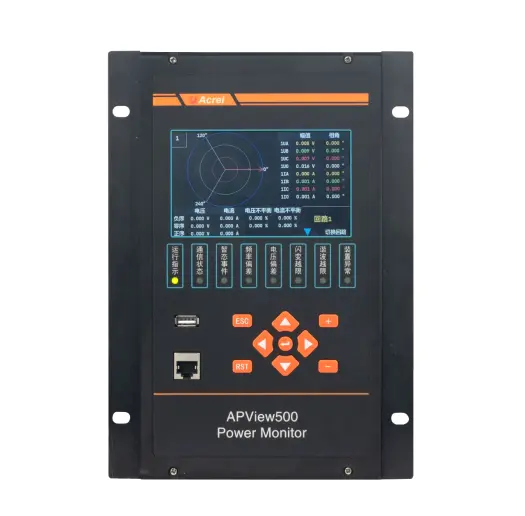

Electric Energy Meters, as an important component of modern power systems, have broad application prospects and development space. With continuous technological advancements and market maturity, electric energy meters will better serve people's production and daily lives.
Household Users: Electric energy meters can be installed in households to monitor electricity usage, achieve precise measurement of electricity consumption and automatic calculation of electricity bills.
Commercial Users: In commercial venues, electric energy meters can monitor electricity load and consumption in real-time, provide energy analysis and energy-saving recommendations for commercial users.
Industrial Users: In industries, electric energy meters can monitor and manage the electricity usage of large equipment, improve energy efficiency, and reduce production costs.
Classification by installation method
Rail-mounted electric energy meters: Installed on a standard DIN35mm rail;
Embedded electric energy meters: Also known as panel meters or flush-mounted meters, these are embedded in distribution cabinets or walls;
Wall-mounted electric energy meters: A type of electric energy meter that can be directly hung on the wall, usually used in industrial fields.
Classification by input current
AC electric energy meters: Widely used in AC power distribution areas such as industrial production, commercial buildings, public facilities, and some residential electricity;
DC electric energy meters: Widely used in DC power distribution scenarios like photovoltaics, energy storage, DC charging piles, and DC power equipment.
Classification by access method
Direct access electric energy meters: Normally suitable for AC current input below 80A;
CT access electric energy meters: Also known as secondary access or current transformer (CT) access, usually suitable for AC current input above 80A;
Hall/shunt access electric energy meters: Usually used for DC input, also known as DC meters.
Classification by common application scenarios
Single-phase electric energy meters: Suitable for single-phase circuits in households, shops, etc., to measure and monitor data like electricity consumption, voltage, and current.
Three-phase electric energy meters: Mainly suitable for three-phase power supply scenarios in companies, factories, malls, etc., achieving precise and comprehensive monitoring and management of electrical loads and energy consumption.
Frequency conversion electric energy meters: Mainly used for high dynamic transient voltage measurement and signal collection, suitable for precision instruments, laboratories, etc.
Centralized meter reading electric energy meters: Achieve centralized management and remote meter reading of large numbers of smart energy meters through serial ports, networks, GPRS, etc.
Distributed meter reading electric energy meters: Using low-power RF communication technology and network communication technology, achieve self-organizing network and distributed meter reading, applicable to commercial buildings, apartment complexes, industrial parks, and other scenarios.
Classification by common functional characteristics
Standard meters: As the measurement standard in value transmission, they have high accuracy and stability.
Active electric energy meters: Measure active power by time integration.
Pulse electric energy meters: Convert the disc rotation count of an induction meter into pulse signals proportionally, outputting pulse signals proportional to the electric energy.
Multi-tariff meters: With multiple counters recording active or reactive energy in different tariff periods defined by the regulations.
Maximum demand meters: Measure the maximum demand and active energy in a three-phase AC grid.
Full electrical parameter measurement meters: Can measure and display various electrical parameters like voltage, current, active power, reactive power, power factor, etc., providing comprehensive energy data.
Prepaid electric energy meters: Commonly used in commercial scenarios like malls, dormitories, rented apartments, rented offices, etc., where payment is required to access electricity. These meters can significantly improve the management level of electricity billing and ensure the recovery of electricity fees.
Bi-directional metering electric energy meters: Commonly used in scenarios such as new energy power generation, grid connection, and integrated PV storage and charging systems.
Click and learn more about the digital energy meter working principle and functions.
Acrel energy meters are the ultimate choice for energy monitoring. Pioneering lead-free production technology, Acrel ensures reliable, large-scale industrial use. As a leader in smart power monitoring and energy metering for the smart grid, Acrel offers both panel meters and DIN rail energy meters to perfectly match your requirements.
 English
English 日本語
日本語 한국어
한국어 français
français Deutsch
Deutsch Español
Español italiano
italiano русский
русский português
português tiếng việt
tiếng việt Türkçe
Türkçe العربية
العربية






